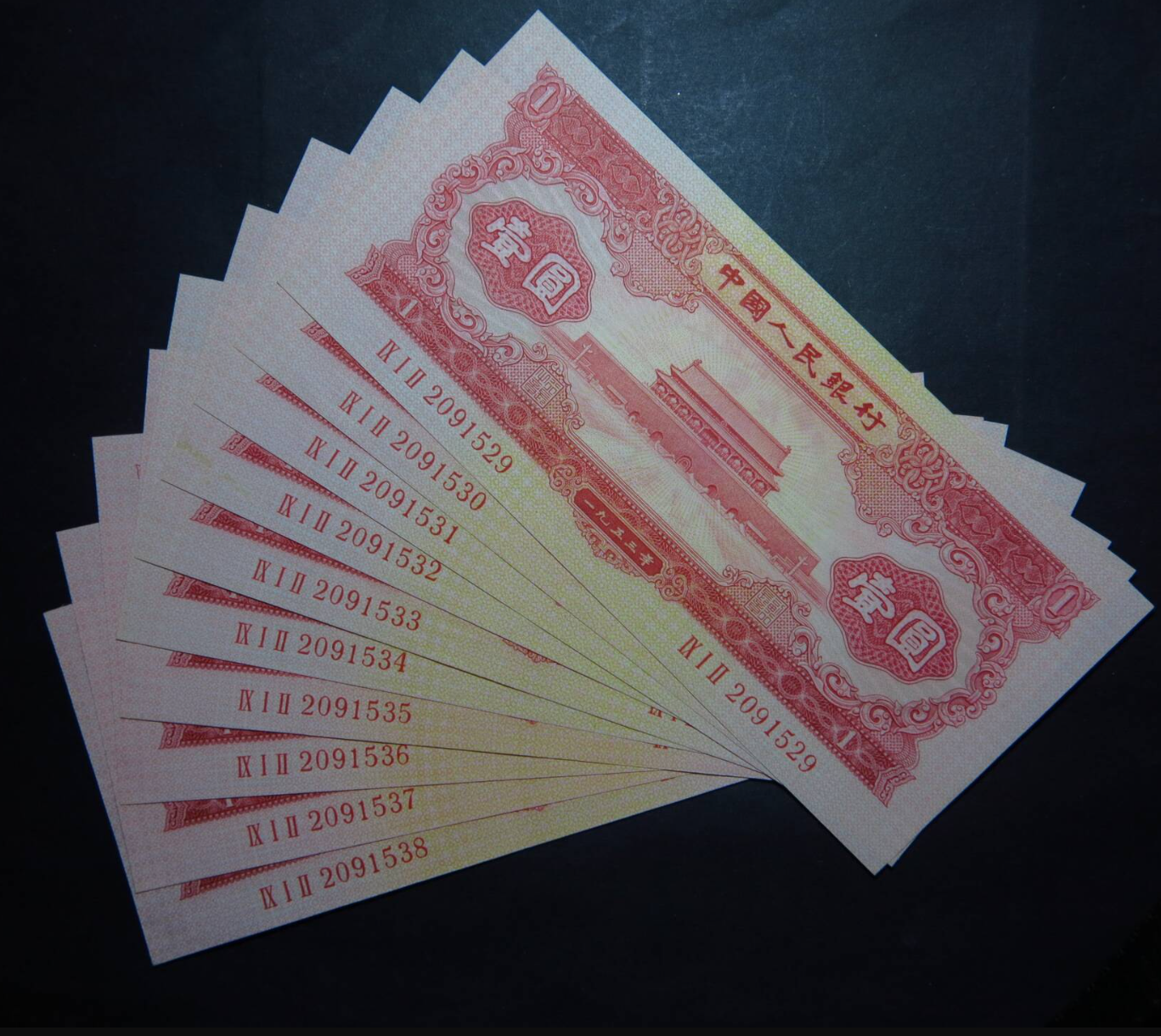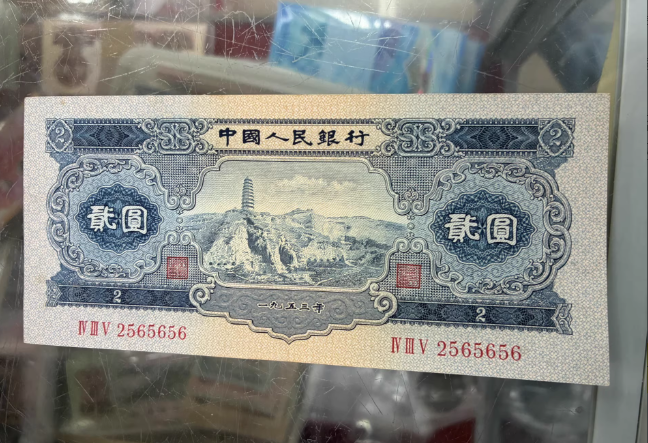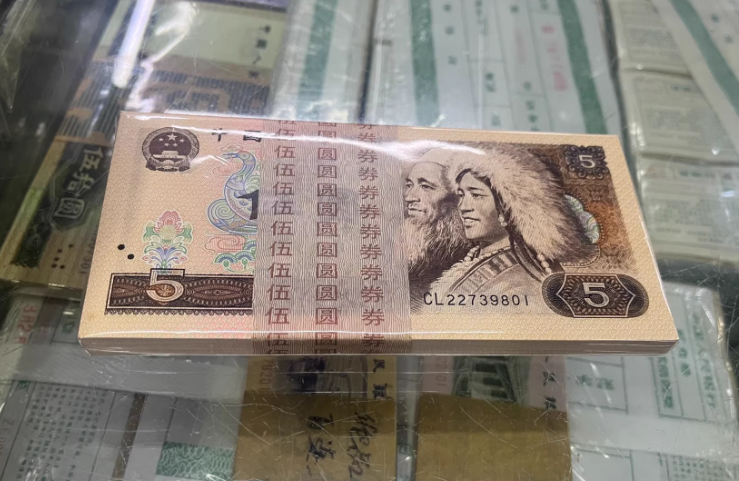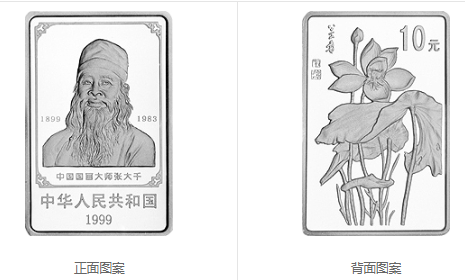一个女人对大地的守望----读解徐晓燕的油画
徐晓燕的名字是与她的“玉米地”为人们所认识。记得1995年在第三届中国油画年月日展上,追示新观念、瓣样式、新技艺术的作品层出不穷,而答晓燕的没一《秋季风景》系列之十二,以其平实的笔致,把那收割后田野里的殊枝败叶,沟沟坎坎的电垄画得极为真实,那种曾经辉煌过后的苍桑,深学付出触动着人的心灵。就这么一幅看似平平常常的“风景画”,在那繁花假装锦的画坛,一举夺得了年燕尾服的“金牌奖”,可算是爆出了个冷门。由此徐晓燕的名字与玉米地就紧紧地连在一起了。此后她又画了《乐土》系列、《大地的肌肤》系列,《原》和《野》,甚而画臭水沟、垃圾堆,所有的画似乎都与土地有关,使人不得解的是在消费文化如火如茶的当下,时尚文化、新媒体艺术品不断涌现,徐晓燕为何坚守着她的“土地”乐此不疲地画个没完没了,她在探寻什么? 如查沿着徐晓燕的人生经历去追寻,也许能把脉到她艺术的本真。 一个平凡而又个性独特的女人 初见晓燕,印象中她爱穿黑色的紧身牛仔服,时尚中又显沉稳。那黝黑的脸蛋,头发一丝不敬地朝后札梳,露出了光溜溜的鼓鼓的额头,嘴上涂了鲜红的唇膏,分外突出,真有点象非州人的味道,谈不上“另类”,但也挺特别的。然而她表情木纳,不善言语,不事张扬,凡事都退之人后,有人说,她在一伙人中,不是那种窜到前头好表现的人,她总是站到第六位置后边的那个人。这强烈的外在形象与内在世界如何统一在她的身上?对此,我一直存有好奇。 晓燕与她的夫君岂梦光,同为油画家,他们一个从内蒙来,一个身在河北,是“为艺术而爱”结合在一起。成天在一起画画,以切磋技艺为乐,相亲相爱,相濡以沫,多么令人羡慕和谐的一对。在艺术上他们可各执一隅,梦光的绘画在天马行空想象的神游中,对中国历史或寓言故事发挥着他的奇思妙想。而晓燕,则忠于自己的感受,踏踏实实地画着眼前所见的校园后的土坡,一块菜地,一片庄稼地,一条淤泥的河道,一堆垃圾,一棵蔫了的大白菜,她画的都是“眼见为实”的景。朴实得有点拙,也让人惊叹她的实在、诚挚和执着,在艺术上,她的主体独立性显得非常突出。 她从小就是听话的乖女孩,学“毛选”的模范。在大学期间,受西方各种思潮的影响,她经历过青春躁动的狂放期,竟还剃了个平头,喝着大碗的酒,画着造型极度夸张、变形,色彩强烈的表现风格的绘画,从行为到艺术一付狂放不羁的反叛精神,待到她与梦光结婚生子,从少女走进女人的经历中,她那朴实的本性重又回到了她的现实和精神世界中来。更有作为女人性情的平和与淡泊,实实大大地回到现实,付出一个女人的爱心,关注着身边琐事,所好的是她没象众多女画家的艺术才华都埋没在没完没了鸡毛蒜皮的琐事中而一事无成,成了“废墟”。她却从琐碎的不起眼的事物中发现画意,发现生命的价值,一生玉米地成就了她“金牌奖”的得主,一棵蔫了的大白菜,间然让她创作出了一批出色的艺术作品,并让自己的艺术攀登上了一个新台阶,之后,她画的臭水沟、垃圾堆、在她的画笔下,都奇迹般地变废为“宝”,她真是一位真善美的使者,艺术上的“常青藤”。 母性的“大地 ” 晓燕的画,离不开“土地”这个题材,画生长在这大地上的生灵万物的生生息息,兴衰枯荣。表面上看它们只是风景画,但她每一阶段的画,随着她的成长在不断地深化主题,不断追求新的表现技法和艺术形式,如果说,她九二年代初所作的《城苑系列》是她开始走进自己生活,常着欣赏陶醉的心情把愉悦的感受,用园拙的笔致,在富的色彩,画出了田野生机盎然的景象。那么,95年后的〈秋季风景〉、〈乐土系列〉以沉郁的笔调,更多地用刮刀拖拉、堆积出粗砺、凝重的画面同肌理,全画又笼罩在炭黑色和土黄色沉郁的基调上中,就把收获过后田野的殊枝败叶、垄塌田陷,一片狼籍,萧杀的景象呈露了出来,此时画面似乎并不只是表现一个辉煌过后悲怆的场景,而是在讲述一个道理,或者在揭示着某个哲理。此后《大地的肌肤》那种被刀刮切割出的裂痕,有种被撕址、割的痛感,会让人心房颤抖。可见,她对在地的感受,己从观赏“他者”,进而全身心的投入,与之血肉相连的“在者”,用大地述说着她的思想,颂诉着她的情感,用大地书写着一个女人不同的生命体验。实现了从感性式的抒怀向观念性绘画的转换。大地,在她笔下拟人化的,是生育人类的母亲,拥有人类的情感和命运,拥有人类的秘密和神情,她历尽磨难,伤痕累累,噬着流血的伤口,依然无怨无悔地无私奉献。晓燕锲而不舍地画着这噬心的主题,以一颗敏感,纯朴充满爱心的心灵,用朴素而深沉浑厚的笔调,抚摸着大地——母亲的创伤。作品中渗透了人与大地浑然整一的淳朴而又深沉的生存秘密,渗透了一个女人与人俱来的经历和奉献精神,以及对人生、对生命的感悟,从而在审美和人文双重意义上把大地的苦难提升到精神的层面。也就把大地的承载性、哺育性、活生生的生命体呈献了出来。 生命的颂歌 2000年她获美国基金奖赴美访问、工作三个月,她居住在风景美丽的街区,异国的风景却提不起她的画意,她却从过去在菜地拍到的一张尚未成熟且己蔫了的大白菜照片中得到了感觉,她一反以往从整体着手的传统手法,却从局部菜心画起,向外扩张,画菜心绽放、舒展、成长起来,画菜叶被虫咬的破洞及殊缺、枯萎的生成过程。大白菜在她的笔下,仿佛鲜活的生命体,歌唱着生的快乐。她用此法,竭尽各种色调,画阳光下红艳艳的白菜、月光下清幽的白菜,各色璀灿的瑰丽的白菜,虽然仍是具像的白菜,却早己超越了其原有的含义,成为一种生命的符号。大白菜,依然是与画大地意蕴一脉相承的生命意识和生命精神。所不同的是她当时的心态与大白菜一样有种成长而成熟的快乐。大白菜系列以一首一首生命之歌,汇成了欢畅的生命的乐章。 大白菜的成功,她更自信自己对画面的控制能力,从2004年工始的〈辉煌〉系列,她也是从局总着手,她轻松地驾驭着这巨幅画面的全局进展,她说,这么画,比过去从全局到局部的撑控容易,且省时省力,当然这是靠她的经验积累和熟练的技能,才能如此驾轻就熟守成巨幅作品的创作,〈辉煌〉重回土地这个主题,所不同的是她一扫枯难压抑的悲怆的生命情调,高歌颂扬收获季节玉米地金壁辉熄煌气象,玉米杆疏密有序,以杆的横坚、舒缓、密集形成画面的爽朗的节奏,洋溢着饱满昂扬的气息,充满了一种成就感。这部份作品,看似具象,但己完全是她自己心中的意象。众大白菜系列到《辉煌》,从以往沉郁的色调,转换为响亮、明快,这也是她艺术走向成熟所拥有的成功者的欢快心情流露。 大地的叩问 她并没有沉醉于成功的喜悦中,作为一位知识女性的良知,有一种与生俱来的忧患意识,有一种对社会,对人类无可推卸的责任感。她的画室在城乡结合部的望京地区,天天来回于城市和乡村之间,她那颗多愁善感的女人心,那一双女人的税利而细致的眼睛,观察着天天发生在身边琐琐碎碎的平常事,什么垃圾堆、臭水沟,通常别人熟视无睹的东西,不入画的景。她却极富情感地画着,并都冠以美丽命名《月亮湾》、《翠桥》、《蝴蝶泉》等,真很难让人弄明白,她画这些有意思吗?有谁会在墙上挂一幅“垃圾”?这些有悖于传统审美趣味的画,今天不愉悦,不快感,却又偏偏让人感到突兀、刺激,并难以忘怀。罗丹说:“自然中认为丑的,往往要比那认为美的更显露出它的‘性格’”。“只有‘性格’的力量才能造成艺术的美”。(《罗丹术论》)也许这种令人不愉、不快感是一种没有征服障碍的审美活动。但当我们在对这个不愉、不快感进行审视时,就会奇异地感觉丑就在美的旁边,丑陋藏在崇高的背后,恶与善并存,黑暗与光明相共。可见,一切人或事,一旦进入世术流程,便必然转化为审美机制。这种“审丑”,也就是在“征服障碍”的审美活动中,就能发现,“丑”其实是一种更高层次的美感形态,因画家以生活本原形态的表现,也更显示出“真”的美学境界,造成更为强烈的效果,这样“丑中美”常常蕴藏在被子忽视的地方,但有支极富艺术感染力,耐人寻味。就因为晓燕看透了事物所蕴藏的意义,不断地在控寻其中内容的真实性,用独特的解度切入,大胆地使用这种非传统的审美的手段而显现出“性格”的审美和量。 甚至最近她完成了《大望京》等创作,都是宽银幕似的巨幅油画,场面之巨大,让人震惊,也让人从中悟出她的用心。在土堆、垃圾堆上产生的新城,让人深深感到城市与土地之间那种生死存亡争夺战的殊酷。城市,记录着人类前进的步伐,但人类创建了城市,反过来又成了城市的奴隶。生活在钢铁水泥森林化中的人,失去了自然的本性和灵性,在“欲望化”的膨胀中迅速异化。城市,给当代人的心态世界带来了什么?在她的画中我们感受到了她内心的种种矛盾:在新旧更A的陈痛中,既有对新兴城市文明的向往;也有对即将失去的土地、田园宁静生活的眷恋;还有城市的冷漠,竞争的殊酷给予人的压力和压抑;更有作为一个外乡人——漂泊都对城市的疏离感和孤独感。她是在讴歌城市的诞生,还是在挟陆城市带来的种种弊端?她的态度是暧味的,有点说清道不清的,但她却把当代人的焦虑、臭水沟的画面中了。现代化的城市,它是以牺牲土地,破坏自然为代价,敦是孰非,引人深思。 看晓燕的在地系列作品,很易与20世纪8年代美国著名生态女性主义思想家卡洛琳 麦茜特的《自然之死》中的观点连接。一个人的自然观,实际上是一种价值观,决定了人在自然世界中自己的定位。在生态女性主义看来,自然概念同性别概念一样,随着文化,历史时代而发生变化,对自然持“有机论”还是“机械论”的观念,这是一咱世界观,事实上是一种权力结构的问题。根植于古代哲学中自然“有机论”的核心,是把自然尤其是大地,与一位养育众生母亲形象等同起来,所以大地是一个活的有机体。当有人对大地母亲进行殊害时,理当受到道德上的谴责。然而,17世纪“科学革命”以来,商业、技术的民展催生的一种“机械化论”自然观,反悔睚然看成是死的、是被动的,并认可了对自然资源的掠夺、开发和操纵权利,由此构成了西方文化试图驾驭自然、征服自然和统治自然的理论根据。面对当前自然资源耗尽的危机,西方社会才又重视“有机论”的环境价值,现代生态学札根于“有机论”,麦茜特所倡导的生态女性主义也如权制”的神话,指出现代科泞同械主义世界观一直在行使对自然和女性的剥削,这种剥削正是导致一个活生生的自然的死亡。她把自然歧视与性别歧视联系起来,并把它们置于社会、经济权力的历史背景考察,把妇女解放同解决生态危机一并作为女性主义奋斗目标。我想晓燕并不知道还有一个生态女性主义,但她的作品,却又那么贴切地注释着、捍卫着这个“主义”所倡导的奋斗目标,这种暗合,是她始料未及的。她作画过程,只重自己生活中随时碰到的事,或身边所发生的变化,从中发现画意,朴实地真实地记录在案,这是她的天性。而她作品中所呈现出的自然观,也正是她的世界观、价值观在自然界中的定位。 从玉米地到大地的肌肤,晓燕的创作心态总体上是在揭示人类对大地的无穷尽的利用、践踏、伤达,那种悲天悯人的痛诉,让人醒悟要善待自然,善待大地。之后她画垃圾堆、臭水沟,可以说是用审丑这种更具“性格“的强烈形象,诉说着一个知识女性的忧虑和企盼,表现她对人类命运的“终极关怀”。她的大地风景画,看似如此的朴实无华,平淡无奇,却蕴含着浓重的人文精神而独村一帜。 2006年6月15日于芳星园 A WOMAN,S WATCHOVER THE EARTH----ON XU XIAOYAN,S OIL PAINTINGSN ART It was the “Corn Field” paintings that have brought general renown to Xu Xiaoyan. At the Third Annual Exhibition of Chinese Oil Paintings in 1995 which featured myriads of fresh concepts, patterns, and approaches in art, the No.12 from Xu Xiaoyan,s “Autumn Scenery” series , deeply touched the souls of the audience, who were impressed by the vivid representation of the messy, dried-up leaves and stalks and the rugged soil in the corn fields after harvesting as well as the dismal bleakness of something no longer grandiose realized through the artless brushwork, This seemingly plain and simple “landscape” proved a dark horse at the nationwide show and carried away the “Golden Award” against everybody’s expectation. Since then, the name Xu Xiaoyan has become closely associated with the image of corn field. Over the past decade, she produced works including the “Paradise” series , “The Skin of the Earth” series, “Origin”, and “Wilderness”, the subjects of which, such as a stinking canal and heaps of garbage, all seem variations of one kind or another on the theme of the earth. As the consumer culture is ruling our time and fashionable gadgets and new media artworks are being produced in great quantities, Xu Xiaoyan is still persistently working on her theme of the earth. We cannot help asking: what is she seeking canval and heaps of garbage, all seem variations of one kind or another on the theme of the earth of the earth .As the consumer culture is ruling our time and fashionable gadgets and new media artworks are being produced in great quantities, Xu Xiaoyan is still persistently working on her theme of the earth. We cannot help asking: what is she seeking? Looking back on the experiences on Xu Xiaoyan, perhaps we will find the answer about the essence of her art. An ordinary Woman With an Extraordinary Character The first time I met Xiaoyan, I was impressed by the pair of close-fitting black jeans which, fashionable, but not gaudy, turned out to be her favorite. Her hair is meticulously combed back to reveal the smooth, prominent forehead, and the crimson lipstick against the dark color of her skin suggests the physicality of an African; her appearance is not so “alternative”, but quite striking. Quiet and calm most of the time, she lacks the gift of the gal and is somewhat backward in coming forward. She’s reluctant to present herself before the crowd and will take every opportunity to the most obscure corner. It has never ceased to arouse my curiosity how such an outer appearance and inner world could coexist in her person. Qi Mengguang, Xiaoyan,s husband, is also a professional oil painter. One comes from Inner Mongolia, while the other lives in Hebei province; their union is for art as well as for love. Spending everyday painting and comparing notes, their affections for each other often arouse envy in friends and colleagues. In artistic creation, they are devoted to different subject matter. While her husband chooses to draw inspirations from the historical events and fables of ancient China and produces paintings that represent fantasies and imaginations, Xiaoyan has remained faithful to her feelings about the reality. The mound behind the campus, a vegetable plot, some crop fields, a river filled with mud, a garbage heap, or a withered Chinese cabbage, all her subjects have some out of her life. Simple to the degree of clumsiness, Xiaoyan,s paintings embodies the honesty, sincerity, and persistence in her. However, it is impossible to ignore her independence as an individual artist. An obedient girl in her childhood, Xiaoyan used to be a model student of Chairman Mao’s works, Influenced by the Western ideas and thoughts during her college years, she has had a period of unrestrained, wildness; a heavy drinker with a crew-cut, she produced a series of highly exaggerated, twisted, hold colored expressionist paintings, displaying unruly rebelliousness in both life and art. After she got married with Qi Mengguang and became a mother, the wild girl was transformed into a quiet woman as the sincere simplicity returned to her spiritual world. With the calmness and simplicity typical of a woman’s temperament, she returned to the earth and turned her eyes to the trivialities around her. Fortunately, she never allowed her talent as an artist to go to seed in the endless everyday life; instead, the trivialities have come to inspire her and made her see the value of life. After a corn field piece brought her the nationwide “Golden Award”, a withering Chinese cabbage gave her the impulse to create a whole series of remarkable artworks, carrying her to a nae stage in artistic creation. Since then, the stinking canal, heaps of garbage, and other images of the kind have all been converted by her brush into “treasures”, A messenger of truth, kindness, and beauty, she seems immortal as an artist. The Maternity of the “Earth” With all her paintings on the subject matter of the “earth”, Xiaoyan,s works have depicted the continuation, succession, prosperity, and decline of all living things on the earth. Looking like landscapes, the painting produced in each stage of her career have been growing with her and in the process deepening their theme through a pursuit of new methods of expression and fresh artistic approaches. In the early 1990s, with “Urban Garden”, she showed her appreciation for life in portraying the lively, vivid open country with the unadorned brushwork and a rich, heavy palette. After 1995, her works such as the “Autumn Scenery” and “Paradise” series took on a more somber look, as the messy, depressing spectacles of corn fields scattered with yellowing leaves and stalks after harvesting were represented through the dominant colors of charcoal black and earth yellow on the coarse, heavy texture created by unruly, violent brushwork. The painting was no longer a mere representation of the pathos after glory, but a statement of, or a revelation about a philosophy. In “The Skin of the Earth”, which came later, the yawning chasms producing by the hacking brushwork caused a heart-rending pain in the spectators. At this stage, the painter was no longer and onlooker, but has identified herself with the subject on the flesh-and-blood level; the earth has become a medium for her to express her thoughts, emotions, and her experiences of life as a woman. That marked Xiaoyan,s transformation from the sensory expression to the socalled conceptual painting. The earth, personified in her paintings as the mother of humanity, shares the emotions, fate, secrets, and mannerisms of its children. Having survived all these miserable sufferings and sustained numerous injuries, mother earth shows no regret and continues to offer whatever that is left to humanity. Persistently focusing on this agonizing theme, Xiaoyan has been gently caressing the wonds of mother earth and solacing her through the undecorated, profound artistic expression, which is inpired by a sensitive, simple, and living heart Her works are saturated with the many plain yet indecipherable secrets about the co-existence of humanity and the earth, a woman’s inherent experience and unreserved affections, as well as the painter’s contemplations on life. As the sufferings of the earth are raised to the spiritual level in both aesthetics and humanitarian significance, its life force, selflessness, and devotion to humanity are effectively revealed to the audience. An Ode to Life In 2000,Xiaoyan was invited to work for three months in the US. While the scenic environment of the foreign country failed to inspire her to take up the brush, the image of a withered, stunted Chinese cabbage in an ole photo provided her with inspirations. Abandoning the conventional approach of first establishing the overall structure, she started with the center of the cabbage, which enabled her to capture the process of the subject’s growing, maturing, being eaten by worms, and withering. On her canvas the cabbage seems to be singing a song of life. With the same approach, she began to apply various hues to her cabbage, which became reddish when lit by the sun or translucent in the moonlight. The cabbage has transcended its objective significance as an ordinary vegetable and become a symbol of life, which corresponds with the theme of the earth in its awareness and spirit of life. With one cabbage after another, Xiaoyan was experiencing the happiness of the process of growth and maturity. Like a string of melodies of life, the cabbage series turns out to be the most joyous works in her oeuvre until now. The success of the “Cabbage” series enhanced Xiaoyan,s confidence in her ability of controlling the composition. In the “Glory” series which started in 2004, again progressing from the part to the whole, she has deployed the visual elements on the huge canvas with great ease. She found it much easier than her former approach of from the whole to the parts, thanks to her accumulated experiences and proficient techniques in the art of painting. In “Glory”, Xiaoyan returned to the theme of the earth, but with a difference. Unlike the sorrow and depression used to dominate her images of the earth, and ode was sung for the golden splendor of the corn fields in the season of harvest. The corn stalks stand erect in an orderly formation to produce a clear rhythm in the composition, beaming a sense of accomplishment. The seemingly realistically represented shapes and forms are actually images from the painter’s subjectivity. From the Cabbage series to “Glory”, Xiaoyan has completed her transition from the gloomy to the bright in her palette, which, in a way, is an unconscious display of her joy over the success of her artistic exploration. The Questioning of the Earth Xiaoyan never indulged herself in the excitement over her success. Both as an intellectual and a woman, her inherent concern for the society and humanty in general has always kept alive in her a sense of responsibility. Her studio is located in the Wangjing area at the edge of urban Beijing. Traveling from the city proper to the countryside, she has observed what is going on around her with the sensitive heart and eyes of an intelligen yet susceptible woman. Soon, she began to include into her paintings visual elements that would be ignored and deemed inappropriate by others, such as the heaps of garbage and stinking canals. What perplex her audience even more are the winsome titles she has bestowed on the paintings, like “Moon Bay”, “Jade Bridge”, and “Butterfly Springs”, After all, who wants to decorate his walls with images of garbage? These paintings against conventional aesthetica tasted, though unpleasant to the eye , prove impressive, striking, and hard to forget. Auguste Rodin once observed that what is commonly called ugliness in nature can in art become full of character, and only the power of “character” can lead to the beauty in art (Rodin on Art and Artists), Perhaps, such visually unpleasing imagery is actually capabl of inspiring a totally unfettered aesthetical experience. When we examine the unpleasantness, it will come to us that ugliness exists side by side with beauty and loftiness, like the coexistence of good and evil, or darkness and light. Once entering into the process of art, anybody and anything will be adapted to fit a certain mechanism of aesthetics. To appreciate the “ugly” imagery, the audience has to first surmount certain obstacles; then they will find a higher form of beauty in the “ugliness”, which, as a processed representation of something the painter has taken from the reality, has the quality of “truth”and thereby produces an even stronger impact. Such “beauty in ugliness”, often hid from our sight, is powerfully meaningful and infectious. Perceiving the significance of her subjects in her unceasing pursuit of the reality , Xiaoyan has adopted a unique angle and employed the unconventional means of aesthetics to reveal the “character”, which is genuinely courageous. Xiaoyan,s works, including the recent pieces like “Great Wangjing” and “Wangjing Street”, all come in surprisingly large formats, like the widescreen in a movie theater; for her, the sheer physical size is a means of artistic expression. The new town built on heaps of garbage makes us realize the cruelty and ruthlessness of the battle between the city and earth. The city, as a witness of human progress, has been created by humanity, who is becoming the salve of its own creation. Living amidst the concrete jungles, humanity has forfeited its natural instincts and intelligence and became increasingly alienated along with the swelling of its desires. What has the city brought to the mentality of humanity? In Xiaoyan,s paintings, we can feel the myriad conflicts inside her in the throes of transition, among which are the longing for the emerging civilization, the regret for losing the land and the quiet idyllic life, the depression caused by the city’s ruthless competition, and the sense of alienation and loneliness of an outsider. or a wanderer. As the painter’s attitude has remained highly ambiguous, it is hard to tell whether her works are meant as a celebration of the birth of city or an attack on the many evils of urbanization, In the heaps and garbage and stinking canals, however, she effectively expressed the anxiety, puzzlement, perplexity, and embarrassment of modern existence. For the audience, after all, it is thought-provoking to realize the fact that the modernized city is growing at the expense of the earth and nature. Xiaoyan,s paintings on the theme of the earth often remind its audience the theory propsed by the well-known US ecofeminist philosopher Carolyn Merchant in her book The Death of Nature in the 1980s, that is , one’s perception of nature is actually a perception of values and thereby determines the positioning of the person in the natural world. In the point of view of ecofeminists, the concept of nature, like the concept of sex, changes with the progress of culture and history. Whether to adopt the “organic” of “mechanical” view of nature is in effect and issue of power structure. The core of the “organic” view of nature, which has its roots in the philosophies of the ancients, is to see nature, especially the earth, as a nurturing mother that provides for all living things, Therefore, the earth is a living organic whole, and anyone trying to hurt mother earth should be denounced on moral grounds. In contrast, since the “Scientific Revolution” in the 17 th century, the development of connerce and technology has led to the formulation of a “mechanical” view of nature, which holds that nature is inanimate and passive. As the rights to develop, exploit, and control natural resources were thereby sanctified, the theoretical foundation was laid for controlling, conquering, and ruling nature in the Western culture, Faced with the crisis of natural resources being exhausted, the Western world has begun to return to the “organic” view of nature for its environmental value. Just as modern ecology has originated in the “organic view of nature, Carolyn Merchant’s ecofeminism also has its roots in the same doctrine. In The Death of Nature, she stressed that the mechanical view has killed nature. Breaking the mythology of “patriarchy” in sciences, she pointed out that the mechanical world outlook of modern sciences has been the culprit in the exploitation of nature and women, which is leading to the death of nature. Also, connecting nature discrimination with sexism , she examined both subjects against the historical background of the development of society and economic power and set both women’s liberation and the solution of ecological crisis as the goals of feminism. Maybe Xiaoyan is not aware of the theory of ecofeminism, buther paintings have supported and defended the goals of the doctrine, which is a coincidence she has never expected. For her painting is a spontaneous process; paying due attention to what’s on around her, she gets her inspirations and records it on the canvas. The view on nature expressed in her paintings is exactly the positioning of her world . From the Corn Field pieces to the “Skin of the Earth” series , Xiaoyan has persisted in revealing the endless exploitation, trampling, and damaging of nature by humanity. The plangent denunciations on behalf of nature as well as humanity caution us to be kind to nature and the earth. In portraying the heaps of garbage and stinking canals, she has resorted to the approach of the “appreciation of ugliness”, which has a stronger character, to stated her worries and yearnings as a woman intellectual and express her “ultimate concern “about the destiny of humanity. Her landscapes about the earth, seemingly plain and simple, are distinctive for their profound humanitarianism. June 15th 2006 Fangxingyuan Garden#p#分页标题#e#
- 上一篇: 大地优美而悲壮----读徐晓燕的画
- 下一篇: 当代山水画缺少评判标准














